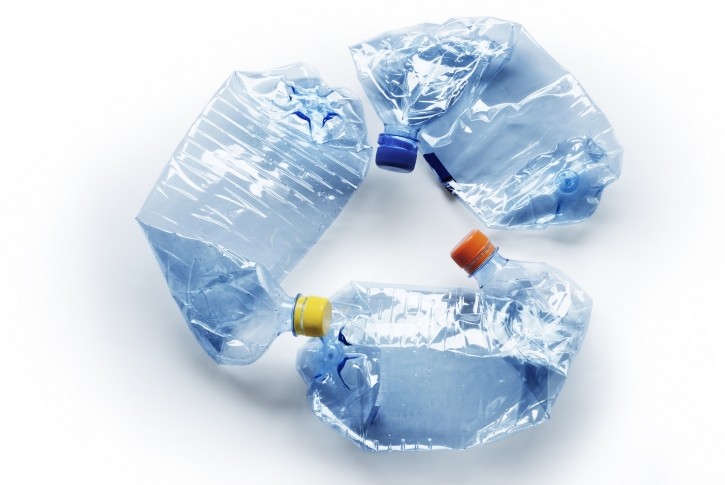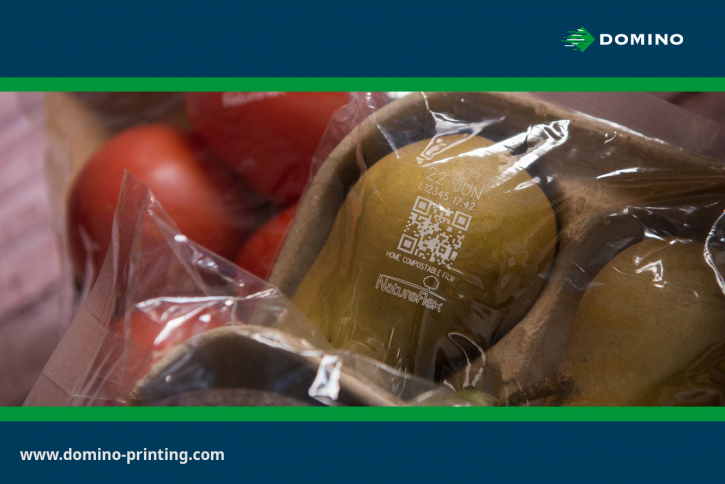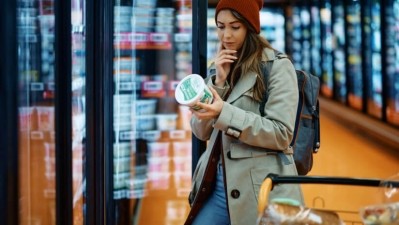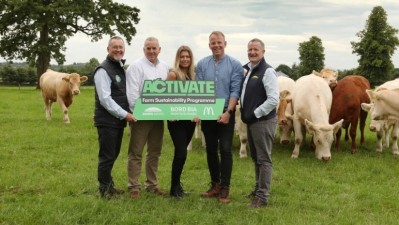Feature
Is there still room for plastic in food and drink packaging?

The damaging effect that plastic waste has on the environment has been forefront in the minds of consumers and producers alike. Greater emphasis is now being placed on manufacturers to explore different forms of packaging materials and formats to reduce their reliance on plastic.
As Kingsland Drinks senior insights manager Vicky Wood puts it, environmentally conscious consumers are seeking out products with eco-friendly packaging, sustainable sourcing of ingredients and responsible production processes.
“Bag in box wine is more efficient to transport versus individual glass bottles, resulting in a lower carbon footprint when moving around the UK and can be a more sustainable alternative to glass,” said Wood.
This packaging format has grown in popularity since the COVID-19 pandemic as consumer understanding of the key benefits of bag in box wines increased over time. What’s more, retailers have embraced different sizes – such as 1.5L – giving wines in this format a more accessible price point.
“Both retailers and consumers are switching on to bag in box wines, so we must embrace what they offer; recyclability, affordability, and longer-lasting wine,” Wood continued. “New consumers to the bag in box category realise the positives in terms of convenience, freshness and quality, and there’s real appetite for formats that offer environmental and sustainability benefits.”
While bag in box is being more widely embraced, the same can’t be said for canned wines. The format is growing in popularity, but has yet to truly break into the mainstream – especially when compared to other ready to drink options (RTD).
“However, consumers are very aware of the benefits of cans versus plastic or glass bottles, and canned wine is becoming more readily available at events and festivals,” Wood added. “As retailers and the on-trade develop a larger range of wine in cans, consumer acceptance will likely grow.
“RTD is one of the fastest growing alcohol categories as consumers look to bring the on-trade drinking experience into their home. Cocktails and mixed drinks are hugely popular and so shoppers are now seeing cans as a quality alternative for spirits. This shift is slowly moving into wine in a can with sales up 15.9% volume and 29.5% value over the last 12 months.”1
Wood expected even more innovations and developments in bottled and bag in box wines, as well as other sustainability improvements to drinks packaging in the near future.
“We expect established brands to invest further in communicating their sustainability credentials, and for challenger and emerging brands to be fully focused on every element of their production, sourcing, supply chains, partnerships and beyond from the outset to ensure sustainable decisions are made at every point in the production process,” Wood concluded.
No simple replacement
Plastic packaging remains one of the cheapest and most versatile materials for use in food and drink packaging, making the industry in turn one of the biggest producers of single-use plastic waste. The industry understands the importance of lessening the associated environmental impacts of its reliance on plastic, but a wholesale change won’t be easy.
Laser coding compostable film for food packaging: Domino and Futamura collaboration
Futamura produces compostable cellulose films for the food packaging market. Its NatureFlex™ brand is a range of compostable packaging films made from responsibly sourced wood pulp.
Domino and Futamura collaborated to assess the suitability of laser coding for NatureFlex film products, giving food packaging customers a print-free solution for coding their packaging.
Domino’s D-Series CO2 Laser was used to code the NatureFlex film and achieved a clean, white code without affecting the original film, changing the chemical composition, or affecting the moisture barrier properties. “We spend a lot of time analysing new packaging materials,” said Dr Stefan Stadler, team lead at the Domino Laser Academy. “Approximately 95% of the food packaging samples we test are post-consumer recycled (PCR) or recyclable plastics.
“We predict that requests for compostable solutions will become more prominent – so we want to be ready to advise customers and provide a solution for these new materials.”
“The cost and technical implications of innovation in alternative packaging techniques remains a barrier for many smaller manufacturers,” explained Air Products food application specialist Becky Raisewell-Bunn. “We must keep in mind what else is at stake for the supply chain when moving away from plastic packaging, making it vital that we consider a balanced approach to the future.”
As it stands, plastic plays a crucial role in addressing food waste, another problem area in which the food and drink industry is keen to cut down on. Certain packing techniques rely on plastic packaging – such as modified atmosphere packaging (MAP) – to preserve the taste, safety and appearance of food.
“Plastic is an essential part of the process that supports the necessary retention and transfer of gases which enables MAP to be so effective in keeping food fresher and safer for longer,” Raisewell-Bunn added. “Because MAP increases shelf life it reduces food waste by avoiding spoilage, especially for perishable products, helping reduce the carbon footprint of food products.
“MAP is a reliable packaging technology that helps us tackle the issue of food waste, even while it uses plastic. But food waste is another environmental problem for the food sector that we cannot overlook when addressing the packaging conundrum. Investing in good packaging must be considered alongside making our food processing systems more sustainable.”
In this instance, the use of plastic in food packaging would seem to be inescapable. Even recycled plastic, seemingly the most obvious solution, is still out of reach until it can be made food safe.
Perhaps the answer lies not in trying to replace the packaging, but instead looking for ways to innovate the production process so that manufacturers don’t have to rely on the same packing methods to keep food fresh?
“Whether it’s through better packaging solutions or improved processing, supporting greener technologies that focus on reducing product waste without compromising the safety or quality of our food will help reduce the overall carbon footprint of packaging and improve the sustainability of our sector,” said Raisewell-Bunn.
Environmentally friendly?
Polyethene terephthalate (PET) is the king of plastics when it comes to food and drink packaging. Its versatility in its ability to shield products and prevent them from spoiling – coupled with its low price – has made it stand out from its contemporaries.
But is this enough to warrant the impact PET has on the environment – not just in terms of waste, but also the damage the creation of virgin PET has on our planet.
A new study conducted by the Assessment on Waste and Resources (AWARE) research group of Politecnico di Milano examined the real sustainability of these materials based on 53 peer-reviewed Life Cycle Assessment (LCA) studies published in 2019-2023.
Through their analysis of these LCA studies, researchers found that conventional plastics were not always the least environmentally friendly choice. Several factors need to be considered when assessing the environmental impact of the packaging material and what it’s made of isn’t the only one at play.
For example, glass may seem more sustainable, but its weight makes transporting products in it more taxing on the supply chain. Recycling glass is much more effective than plastic, but it must be done under specific conditions to make reused glass more advantageous.
Metals such as aluminium offer a weight similar to plastic and is much easier to recycle than glass, but there are still opportunities for improvement, such as focusing on reuse and limiting the transport distances and environmental loads associated with the reprocessing and washing of packaging. All in all, there is no one-size-fits-all solution.
It is important to emphasise that a comprehensive assessment of the sustainability of packaging also requires an analysis of social and economic impacts. Only by considering the entire life cycle can we fully understand the implications of each packaging choice.
Giovanni Dolci, AWARE group researcher, identified two fundamental truths from the 53 studies analysed: “First of all, the choice between plastics and alternative materials is highly dependent on the specific application as well as the intrinsic characteristics of the material.
“At the same time, many studies show methodological criticalities that may influence the results of the comparison, such as analysing only climate change effects without assessing other potential impacts or analysing unrealistic end-of-life packaging management scenarios.”
Commenting on the findings, professor of waste management and AWARE coordinator Mario Grosso, claimed plastic can be a material with excellent environmental performance, provided it is used correctly.
“This is due to its light weight, which allows for minimal use of material per package unit and optimising of production processes compared to younger materials such as bioplastics,” he explained.
“However, we should not forget the two main criticalities, that is, production from fossil resources and, above all, the high propensity to dispersion of plastics in the environment, where it takes a very long time to degrade; the latter aspect is generally not included in assessments such as those analysed in the research.”
Creating the closed loop
AWARE’s assessment concludes that plastic can still be a sustainable resource – from a certain point of view. But can its role in reducing food waste outweigh the environmental cost during its production? What if we were to reduce the amount of new plastic that has to be produced each time we need a bottle of fizzy cola?
The simple answer would be to add more recyclate into food and drink packaging. In this way, producers can remove the need for virgin PET completely and eliminate a major source of scope 3 emissions from the business.
But even outside of the restrictions of the number of recycled materials that can be used in food and drink packaging, we run into a more immediate problem – where does that recycled PET come from?
As Britvic commercial sustainability director Tom Fiennes explained, most PET collected at the kerbside is contaminated and therefore not appropriate for reusing in food applications. For plastic to be able to go back out into the world as another bottle, it needs to have been food safe to begin with.
“When it [PET] goes through the system, you lose a lot of it through yield and the quality of it that comes out the other end can be considered poor,” Fiennes added. “We don't have a closed loop recycled deposit return scheme (DRS) system in this country that allows us to collect material that is uncontaminated. That's what you need in order to be able to provide a stream of material that is of high quality.”
Companies like Britvic have invested vast sums of money into recycling plants to help create the infrastructure needed to support a closed loop DRS system.
It’s no secret that getting a DRS system off the ground in the UK has been challenging, but Fiennes sees it as the best way of getting a steady stream of quality material that can be quickly and easily recycled into new packaging.
“We look at DRS as being a massive unlock in increasing the amount of recycling that is being done by consumers,” he continued. “Anything that's currently on the go, that's put into a bin in a park or a petrol station that doesn't have segregated bins, all of that becomes recyclable, or very high percentage of it.
“All of a sudden it unlocks a load of high-quality food grade material going into a recycling system that we would then be able to call on – along with all other manufacturers within the GB Market – to be able to make high products with higher percentage of rPET content.”
Latest innovations in food labelling
Food and drink manufacturers are also exploring ways to make the labels they use on food more sustainable too.
As previously featured on this site, Tesco has turned to the power of lasers as it’s labelling method of choice.
High-powered lasers remove a tiny section of the top layer of skin on extra-large avocados sold by the retailer. Supplier Westfalia Fruit said avocados were the perfect candidate for the new tech due to the thickness of the fruit’s outer skin – a process that takes less than a third of a second.
Etching the fruit sizing label into the skin has no effect on the quality, shelf life and taste of the fruit, according to Westfalia.
Tesco said it had started trialling the new labelling method on avocados as they gave the most visual impact. It is also running a plastic tray packaging trial for two of its most popular avocado lines, using a cardboard container instead, that is easier to recycle.
Tesco avocado buyer Lisa Gilbey said: “We’re really excited to hear customer feedback on our new laser-etched avocados, avoiding the need for a barcode sticker that can easily be forgotten and left on when recycling through household food waste.”
Laser engraving was also used earlier this year by Coca-Cola on its trial of label-free Sprite and Sprite Zero bottles. The trial ditched the label in favour of an embossed logo on the front of the pack, while product and nutritional information were laser-engraved on the back.
Of course, labels sometimes need to reflect the quality and prestige of the items they are attached to.
Distilia – an independent bottler of high-quality spirits specialised in selling bottles of rare, collectable alcohol – approached Masterpress to create labels that would mirror the luxury and exclusivity of its products. Unlike standard retail labels, these had to demonstrate superior quality and durability.
The project involved the production of 250 exclusive labels using ‘hybrid printing’. By combining multiple technologies – digital printing, screen printing, lamination and varnishing – Masterpress was able to create a distinctive, touch sensitive label that uses less water, energy and paint in its creation.
“The project was something new for us, considering the label’s niche purpose and the fact we had to reproduce real art with all its details,” said Masterpress digital printing manager Aleksander Gajecki. “At the same time, Distilia’s flexibility on how we should implement the label offered us an opportunity to see where we stand when it comes to our creative and technological capabilities.”
While Distilia’s brief called for a label that conveyed the elegance and class of its products, the typical food label has a more practical purpose.
Best before dates, use by dates and allergen information all fight for space on a lavel. A manufacturer often has limited real estate on a product label to convey everything that a consumer needs to know about the food they are eating.
Tom Fiennes at Britvic explained how hard it can be to ensure on pack recycle labels can be to get right – sometimes it can be hard for consumers to understand what they mean and work out if they can even recycle the packaging they hold in their hand.
“We can communicate with consumers as best we can on pack, but if I'm honest with you, there's a there's a challenge with the amount of space you have on pack, and there's a challenge with how much time consumers get to interact with a product at the point of purchase,” he explained.
Manufacturers can make things easier for consumers by using materials for their labels that react to external stimuli.
This could be as simple as a part of a beverage can that changes colour when it gets cold, indicating the optimal temperature to drink it. More impressive is when similar concepts are used to indicate if a food is safe to eat or not.
Paper thin RFID labels on food packaging can provide up to date monitoring of a product at every stage of the supply chain, providing data such as temperature to ensure it is still safe to eat. Biosensors are also being developed that give a physical indication that a product may have spoiled without the need for testing.
In 2022, researchers at the Shih Microfluidics Lab developed a disposable, paper-based synthetic biosensor that can quickly detect rotten meat.
“Making a rapid, easy-to-use biosensor for people to check the quality of the food they are eating is empowering,” said project lead Alaa Selim. “We wanted to make a device that anyone could use, that is disposable and contained no toxic materials.”
No silver bullet?
There is a willingness expressed by manufacturers to distance themselves from plastic packaging, but the reality is that there is no silver bullet that solves all their problems.
Replacing plastic can mean having to completely uproot your supply chain, a move that can prove both costly and disruptive for small producers. What’s more, the alternatives may not be as environmentally positive as one may be led to believe – heavy glass bottles require more energy to move, resulting in more emissions created.
Plastic remains the dominant player in the world of food and drink packaging, but many are hoping that it can be dethroned from its place at the top of the heap by a better, more environmentally friendly option.
References
- Circana MAT data to 9th June 2024

















